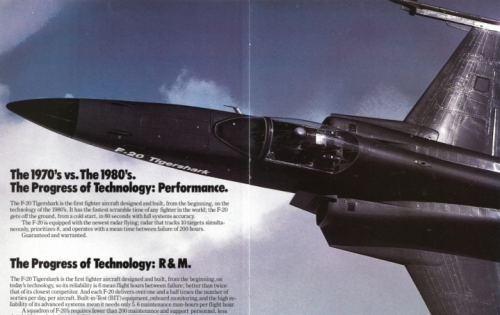Pick any three variables and you might be able to build it.
Hah!
Hah!
The question is - is there
reeeeally no way when commercial products' user experience grows dumb to the point of (...)?
The situation now looks like:
(1)Countries are hesitant to provide even solutions over half a century old. Not because they're terribly 'advanced', but because they do in fact compromise something significant, be it your own force or forces of your allies, tech, or simply reputation (like it, hate it, burned Leopards and Bradleys
were a public shock).
Providing a country even in an all-important fight with something modern largely isn't even considered.
(2)Even when the decision is made, just retraining pilots takes months/years.
Retraining ground personnel is hard to the point of absurdity - while Saab likes to (rightfully) boast how Gripen service can be controlled by a single officer - the problem is
how much time is invested in that officer. It alone forces governments up onto the escalation ladder, because providing something like that in a reasonable time is unrealistic: service has to happen on proper facilities, by properly trained men.
When servicing(!) equipment forces dangerous political choices - something went terribly wrong.
(3)And then comes unique, tailor-made infrastructure - such that even industrial countries take years to absorb ... and no one even considers it as an option if this infrastructure is within LACM "political range". Because wars
to end all wars can only be fast, furious, and decisive - just like in 1914, home by Christmas. We want them to be like that, after all.
During the CW, both sides had the option to start offloading aircraft in crates right after yet another coup. Ground service&maintenance could be done there, the aircraft in question were rugged enough to last through a good fight without fine maintenance work on them.
If after yet another coup those went to your adversary - "Oh, that's horrible, whatever".
Users could be sure, that if circumstances will change, they will still fly combat missions without magic tricks. And while mediocre - they are still modern fighters.
Other users of the same plane could be sure that something they bought won't turn into a Pumpkin the moment their adversary lays their hand on it.
The producer could be sure that this thing doesn't really compromise him. At worst - now yet another yet again unfriendly country could get some reasonable&modern fighters.
It isn't like during CW everyone around were Neanderthals, there was no tech, and it was impossible to create something advanced and serviceable only at home.
Basic point - F-5/F-20 (while no less outdated than F-16s now in question)
could've been sent to a new unstable ally more or less on notice. Mig-21 could've been sent on notice - right into the fray.
Armenia, now Ukraine - something is wrong here. Fighter aircraft fleets are basically capital ship investments now - sure, you can get more aircraft during the war, but only if you invested in this particular fleet in time, well before - and God forbid something happens with a certified(c) maintenance(c) hub.

